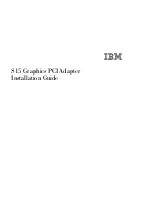
39
The BIOS is a program located in the Flash Memory on the motherboard.
This program is a bridge between motherboard and operating system.
When you start the computer, the BIOS program gains control. The BIOS first operates an
auto-diagnostic test called POST (Power on Self Test) for all the necessary hardware,
it detects the entire hardware devices and configures the parameters of the hardware
synchronization. After these tasks are completed, BIOS will give control of the computer
back to operating system (OS). Since the BIOS is the only channel for hardware and software
to communicate with, it is the key factor of system stability and of ensuring your system
performance at best.
Chapter 4
Introduction of BIOS
In the BIOS Setup main menu, you can see several options. We will explain these options
in the following pages. First, let us see the function keys you may use here:
Press <Esc> to quit the BIOS Setup.
Press
↑↓←→
(up, down, left, right) to choose the option you want to confirm or modify.
Press <F10> to save these parameters and to exit the BIOS Setup menu after you complete
the setup of BIOS parameters.
Press Page Up/Page Down or +/- keys to modify the BIOS parameters for the active option.
4-1 Enter Setup
ower on the computer and press <Del> key immediately to enter Setup.
If the message disappears before your respond but you still wish to enter Setup,
restart the system by turning it OFF then ON. You may also restart the system by
simultaneously pressing <Ctrl>, <Alt> and <Delete> keys.
Summary of Contents for 2I260D
Page 7: ...3 Photo 1 2 1 3 1 2 3 Insert Unplug...
Page 17: ...2 4 Layout 2I260D 13 CG1 CA3...
Page 19: ...15 2 5 1 Bottom Side Diagram 2I260D SATA1 SIM1 CU1 CU2...
Page 20: ...16 2 6 List of Jumpers JSB1 CMOS DATA SET...
Page 24: ...List of Connectors MPCE1 2 Two Mini card socket 52pin SIM1 SIM card Push Push 20...
















































